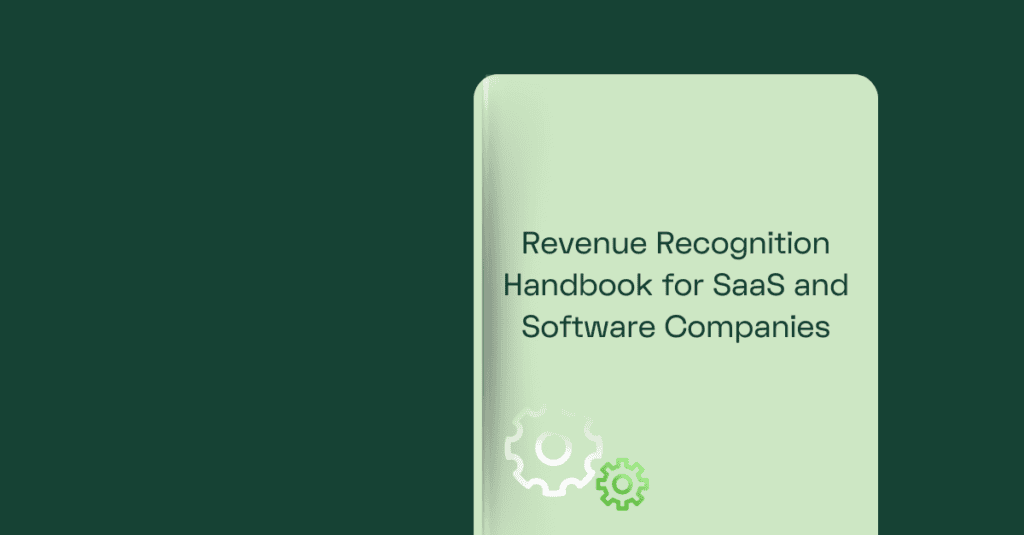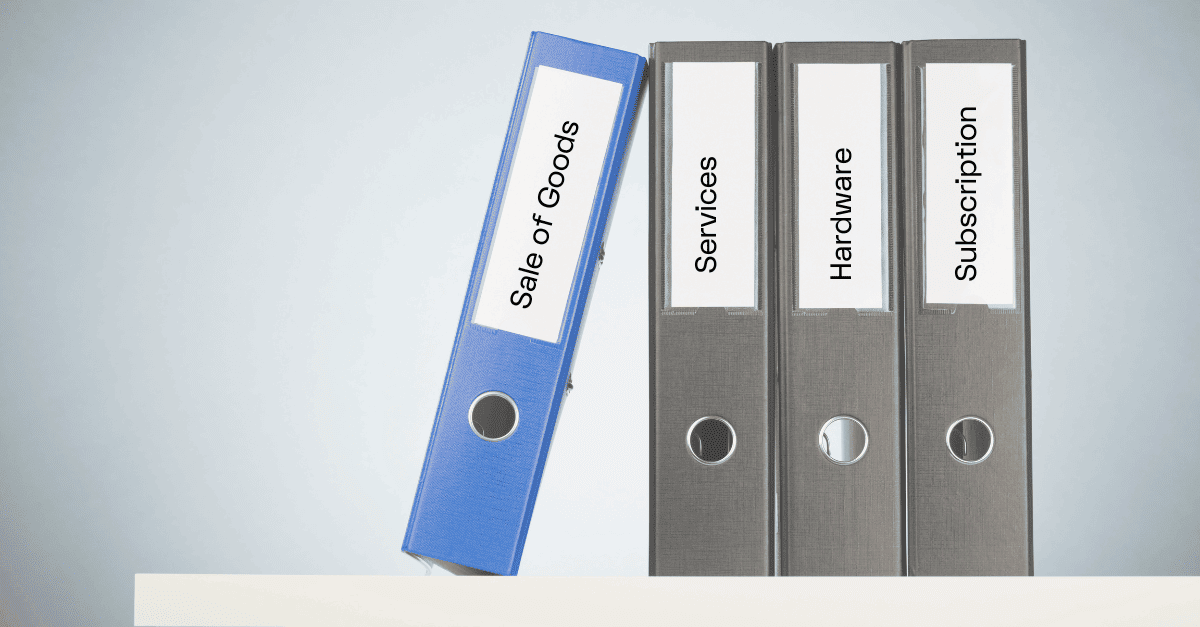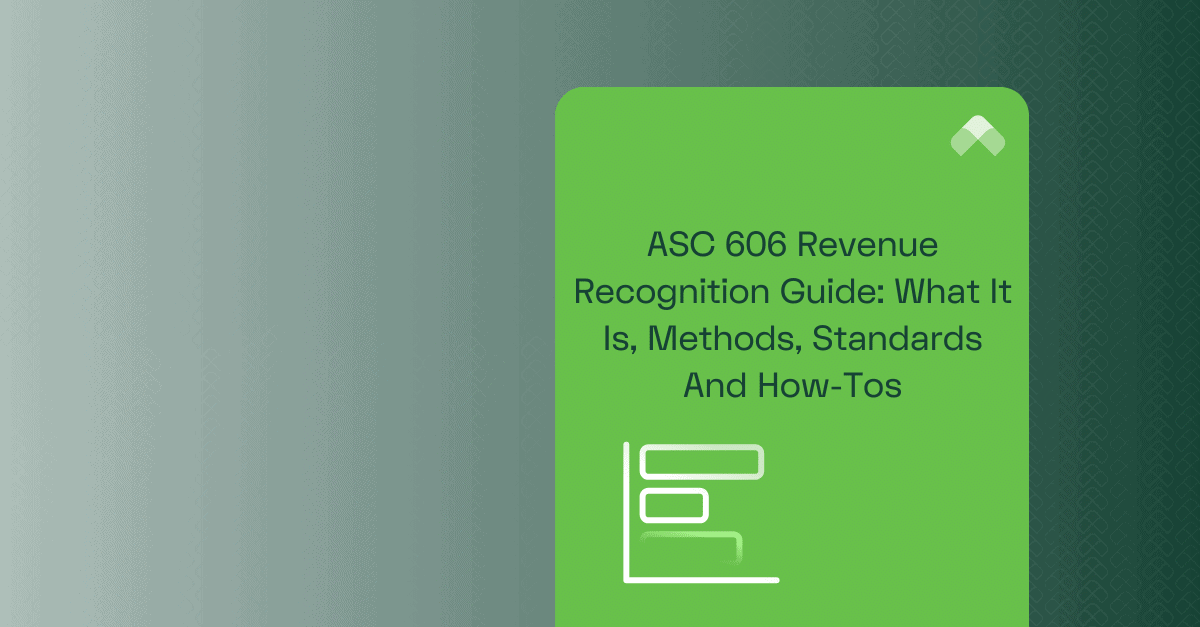Revenue recognition lies at the heart of financial accounting—shaping how companies report their earnings. It is a fundamental principle in accounting that helps with the accuracy and transparency of financial statements.
Fortunately, businesses can follow the examples of the revenue recognition process and standards set by authoritative bodies like the Financial Accounting Standards Board (FASB) and the International Accounting Standards Board (IASB) to mitigate regulatory, legal, and reputational risks. These guidelines align with generally accepted accounting principles (GAAP) and international financial reporting standards (IFRS).
Recognizing revenue is crucial because it impacts a company’s growth projections, shareholder confidence, and regulatory compliance. In this article, we’ll look at four common examples of the revenue recognition principle, shedding light on how companies accurately recognize revenue under the accrual accounting method.
By understanding the revenue recognition concept and its nuanced process, businesses can provide stakeholders with a comprehensive view of their financial performance, promoting transparency and trust in financial reporting. Let’s review 4 most common examples of the revenue recognition principle.
1. Sale of Goods
Let’s start by discussing how to recognize revenue when a company sells physical products. In this case, specific criteria must be met to correctly recognize revenue:
- There should be evidence of a transaction, typically a sales agreement or invoice.
- The transaction price must be determinable with reasonable certainty, accounting for any discounts, returns, or allowances.
- The company should have transferred control of the goods to the customer, indicating that the customer now has ownership and the risks and rewards associated with the products. This transfer of control typically coincides with the delivery of the goods to the customer’s specified location.
For instance, consider a scenario in which a technology company sells a batch of smartphones to a distributor. Revenue would be recognized only when the smartphones are delivered to the distributor, the transaction price is apparent, and the company has fulfilled its obligations per the sales agreement.
2. Service Revenue
Next, we’ll consider how revenue recognition applies to service-based businesses. The revenue recognition principle dictates that revenue should be recognized when earned and realizable, irrespective of when the customer pays. In the context of service-based enterprises, revenue should be recognized as the business fulfills its performance obligations to the customer.
Several factors influence service revenue recognition:
- The business must identify its performance obligations, which are the specific tasks or services it has agreed to provide to the customer. Revenue recognition occurs as these obligations are met.
- The business should be able to reasonably estimate the revenue it expects from the customer. This estimation ensures revenue is recognized accurately, reflecting the economic benefits of the services provided.
Consider a consulting firm as a revenue recognition example. When they enter into a contract with a client to provide a certain number of fixed advisory hours, the revenue can be recognized once the consultant delivers those hours. However, if it is agreed upon that the consulting firm delivers recurring hours over the course of twelve months to the customer, the revenue may be recognized as the consulting hours are delivered on a monthly basis.
Even if the client has yet to pay, as long as the consultant fulfills their performance obligations, revenue can be recognized in accordance with the revenue recognition principle. This demonstrates how important the revenue recognition principle is to service-based businesses, given that it helps ensure the accurate portrayal of financial transactions.
3. Long-Term Contracts and Hardware Projects
Now, we come to a discussion of revenue recognition as it relates to long-term projects or contracts. When companies embark on extensive, time-spanning endeavors, such as construction or hardware projects, they must correctly account for revenue earned during these projects. The two primary methods employed for this purpose are the percentage of completion and the completed contract methods.
Under the percentage of completion method, revenue recognition occurs as a project advances toward completion, based on the percentage of total work accomplished. This method aligns with the concept behind performance obligations (recognizing revenue as each performance obligation is satisfied). For instance, if 60% of the work is finished in a year-long project, 60% of the total contract value is recognized as revenue.
In contrast, the completed contract method defers revenue recognition until the project is substantially complete. Companies using this method only recognize the total contract value as revenue when the entire project is finished. The completed contract method is typically employed when estimating project progress accurately is difficult.

The choice between these two methods can significantly impact a company’s financial statements and highlights the importance of precise revenue recognition in long-term contracts such as construction and hardware projects.
4. Subscription-Based Revenue
Finally, we’ve come to subscription-based businesses and how they should record revenue. In this instance, revenue recognition revolves around the concept of deferred revenue.
When customers subscribe to a service or product for a specified period, like monthly or annually, the company doesn’t immediately recognize the full payment as revenue. Instead, it defers a portion of the revenue on its balance sheet. As the service is provided over time, the deferred revenue gradually becomes recognized as revenue on the income statement.
For revenue recognition example, a software-as-a-service (SaaS) company may sell annual subscriptions to its cloud-based project management tool. If a customer pays $1,200 upfront for a year’s subscription, the company would initially record this as deferred revenue.
Each month, the company would recognize $100 as revenue on its income statement, reflecting the portion of the service provided during that period. This corresponds with the revenue recognition principle—revenue should be recorded as the service is delivered rather than all at once.
Understanding subscription-based revenue recognition is crucial for companies that operate a subscription business model, as it helps them maintain accurate financial statements and comply with accounting standards, ultimately building trust with investors and stakeholders. To dive deeper into this topic, explore various use cases of subscription-based revenue recognition on RightRev’s website, from ramp pricing and bundled contracts to discounts and more.

To read more about revenue recognition for SaaS companies, check out our handbook!
Challenges in Applying the Revenue Recognition Principle
Challenges arise when the revenue recognition principle states that revenue should be recognized when contractual performance obligations are met, which may not always align with cash-based accounting. This can lead to discrepancies between recognizing revenue on the income statement and the actual cash receipt, potentially resulting in accrued revenue and necessitating careful tracking and adjustments to maintain accurate financial reporting.
Let’s explore several case studies that highlight some of the challenges related to revenue recognition.
Challenge 1: Subjectiveness in Defining Revenue Policies
Revenue recognition involves making judgments and subjective assessments about when and how to recognize revenue on financial statements since various factors and circumstances can influence it.
To overcome this challenge, it’s a good idea to include all revenue stakeholders, including sales, financial reporting, accounting, and internal audit teams, in creating and defining revenue recognition policies. Doing so can streamline your Quote-to-Cash process, ensuring alignment from Order creation to reporting output.
Ultimately, this builds trust and confidence in your company’s financial performance and disclosures. This collaborative approach also helps mitigate potential conflicts of interest, improves the accuracy of financial information for all parties involved, and is realized in customer satisfaction.
Challenge 2: Variability Among Goods or Services Sold
Naturally, there can be significant variability among goods and services due to differences in their nature, pricing strategies, customer demand, and more. Each product or service type may require a distinct revenue policy, such as subscription-based revenue for software services, one-time sales for physical products, or ad-based revenue for content platforms, depending on their unique characteristics.
This typically necessitates a tailored approach, which can quickly become a headache—especially when revenue recognition processes are handled manually, as revenue treatments can vary not only from company to company but also within one where it’s necessary to adapt to the specific attributes and strategies associated with each product or service. An automated ASC 606 revenue recognition solution can greatly simplify this process.
Challenge 3: Revenue Recognition Without Automation
Figuring this all out by hand without an ASC 606 revenue recognition automation tool like RightRev can be extremely challenging due to the complexity and constantly evolving nature of accounting standards. Manual processes are error-prone and tedious, potentially leading to non-compliance and serious regulatory consequences.
Automation can greatly help achieve consistency, accuracy, and adherence to the latest accounting standards, reducing the risk of financial misstatements and compliance issues.
Note: Check out our blog on the Top 3 Reasons to Automate Revenue Accounting.
Automating Revenue Recognition Is the Answer
Revenue recognition plays an integral role in financial reporting, helping companies and their stakeholders. The guidelines and standards issued by FASB and IASB give businesses a better understanding of how they should recognize revenue while also providing investors and others with more reliability in evaluating companies’ financial performance and stability.
However, businesses and their products and services vary greatly, complicating revenue recognition. Subscription-based services, for revenue recognition example, will likely need to record revenue very differently than construction companies and so on.
While it’s possible to go at it alone, it can also be quite liberating (and arguably more responsible) to take advantage of a recurring revenue management software option or a revenue recognition automation tool.
How RightRev Can Help
Powerful, flexible, and scalable—that’s RightRev in a nutshell. Our solution will meet all your needs no matter how complex your revenue recognition situation might be (or seem).
When we set out to build RightRev, we sought to solve all the problems with existing solutions- inability to handle high-volume transaction throughput, insufficient customer experience, inability to handle revenue recognition complexity, eliminating the need for manual workflows and data transformation, and long implementations. RightRev can uniquely handle revenue complexity with a simple design and user experience. Pre-built integrations make implementations much easier than existing solutions.
So, make the decision now to free your accounting team from all those confusing spreadsheets and set your team up for growth.



